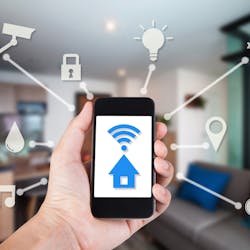CTA's study suggests the overall U.S. technical energy savings potential from several individual approaches ranges from 0.3 to 1.1 quadrillion BTUs (quads) of primary energy consumption, or from 1% to 5% of total residential primary energy consumption. The study highlights several areas where home automation could deliver energy savings, including connected thermostats, HVAC zoning, and control of window shades, circuits and lighting.
Actual energy savings depend on how users choose to control their automated household devices and equipment, the study indicated. Intelligent features, when activated, can enable greater savings. Smart thermostats, for instance, can learn when specific rooms in a home do and do not need conditioning to save energy without sacrificing comfort. Savings could be higher when automated devices are used together, as with whole-home control.





